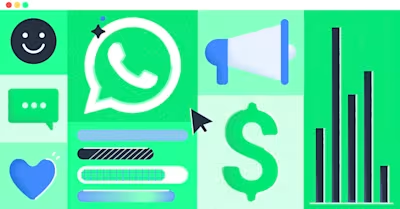
Considering WhatsApp marketing to boost revenue? If your email marketing is falling flat, WhatsApp marketing may be just what you need. The fact is, people are using email less for communication in general; instant messaging is the way of the future.
And where are most people messaging? WhatsApp! With over 2 billion users around the world, WhatsApp is the most popular messaging app. We’ll share all you need to know to get started with WhatsApp marketing, along with a few examples of how businesses are successfully using WhatsApp for marketing.
What is WhatsApp Marketing?
WhatsApp marketing is a type of instant messenger marketing that helps businesses reach a wider audience, make personal connections with customers and ultimately increase sales.
A typical marketing strategy involves several touch points to engage prospects and ultimately convert them into customers. Traditionally, this starts with ads. Businesses then aim to get prospects’ contact information to continue marketing via email.
WhatsApp marketing works in a similar way, but rather than filling in an email address, all prospects need to do is send the business a message on WhatsApp. The business can then further contact the prospect to nurture their interest and nudge them toward a purchase.
4 Benefits of Using WhatsApp Marketing
Marketing over WhatsApp has many benefits for businesses of any size. If your customers use WhatsApp, you need to reach out to them there. Here are just a few of the reasons:
Proactive Engagement
WhatsApp marketing proactively reaches out to prospects where they spend most of their time. Unlike most messaging apps, WhatsApp allows you to start conversations with contacts who opt-in to hear from you.
Cost-Effective Method
It’s also cost-effective. WhatsApp Business App is free, so it’s great for small businesses on a limited budget. Larger businesses will need to use WhatsApp Business API, which costs more but has great returns. We’ll discuss these options more later.
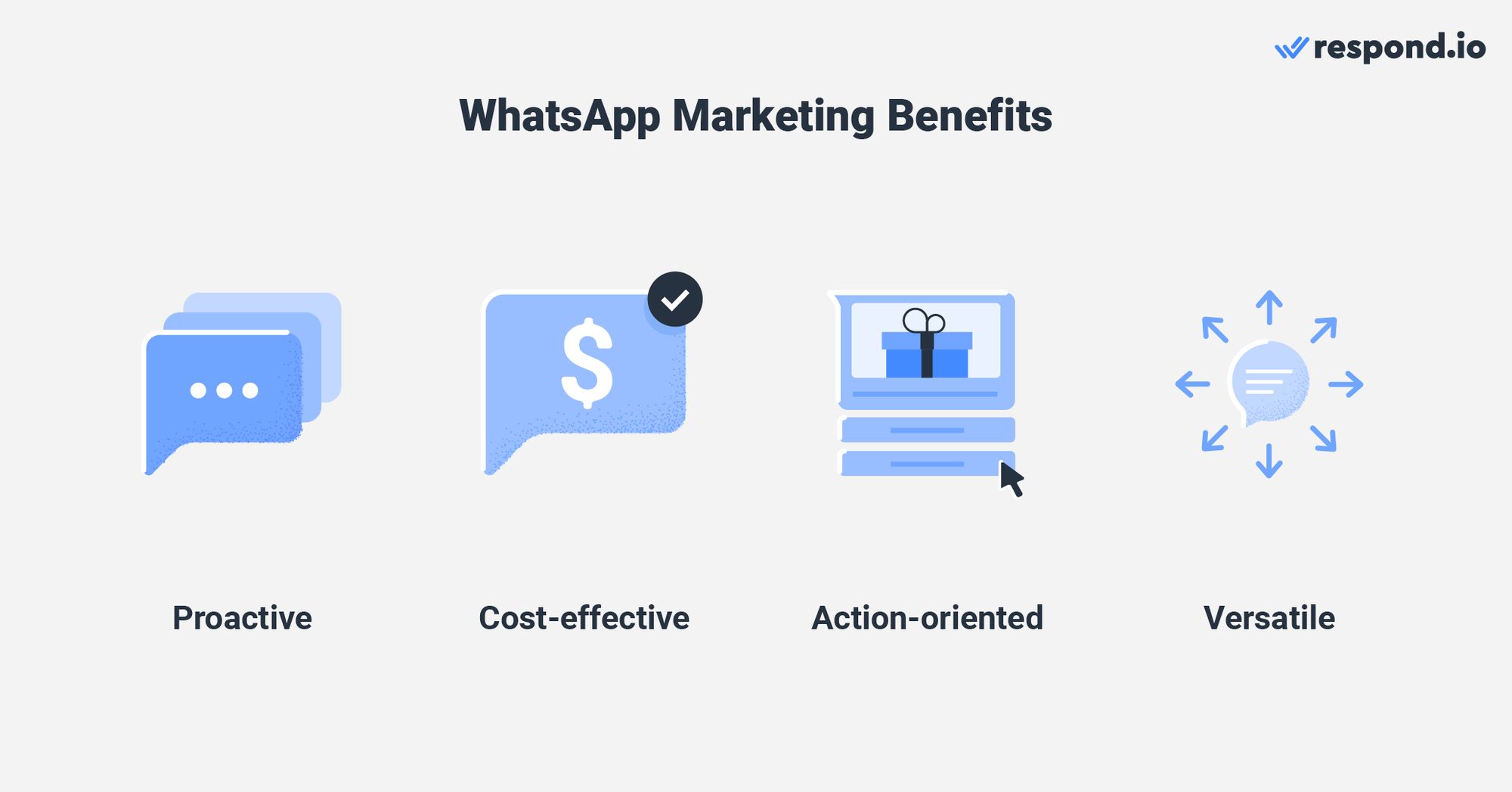
Action-Oriented Results
WhatsApp marketing spurs prospects into taking action with interactive Reply Buttons or List Messages. Automation can also be used to facilitate conversations with a realistic persona, as in the example of Maggi’s Chef Kim campaign, which we’ll go into later.
Versatile Applications
Finally, WhatsApp has versatile applications through the full marketing funnel. Use a WhatsApp link in click-to-chat ads and lead generation campaigns to get contacts; then use it as a remarketing tool to inform prospects about promotions and encourage repeat purchases.
Turn conversations into customers with respond.io's official WhatsApp API ✨
Manage WhatsApp calls and chats in one place!
How to Start WhatsApp Marketing: 3 Things to Consider
Before you start using WhatsApp for marketing, you’ll need to know about the different account types and their features.
1. WhatsApp Marketing Accounts
There are two types of accounts you can use for WhatsApp marketing: WhatsApp Business App and WhatsApp API. Each has its own features and limitations. For small businesses, WhatsApp Business App may be enough for your use cases.
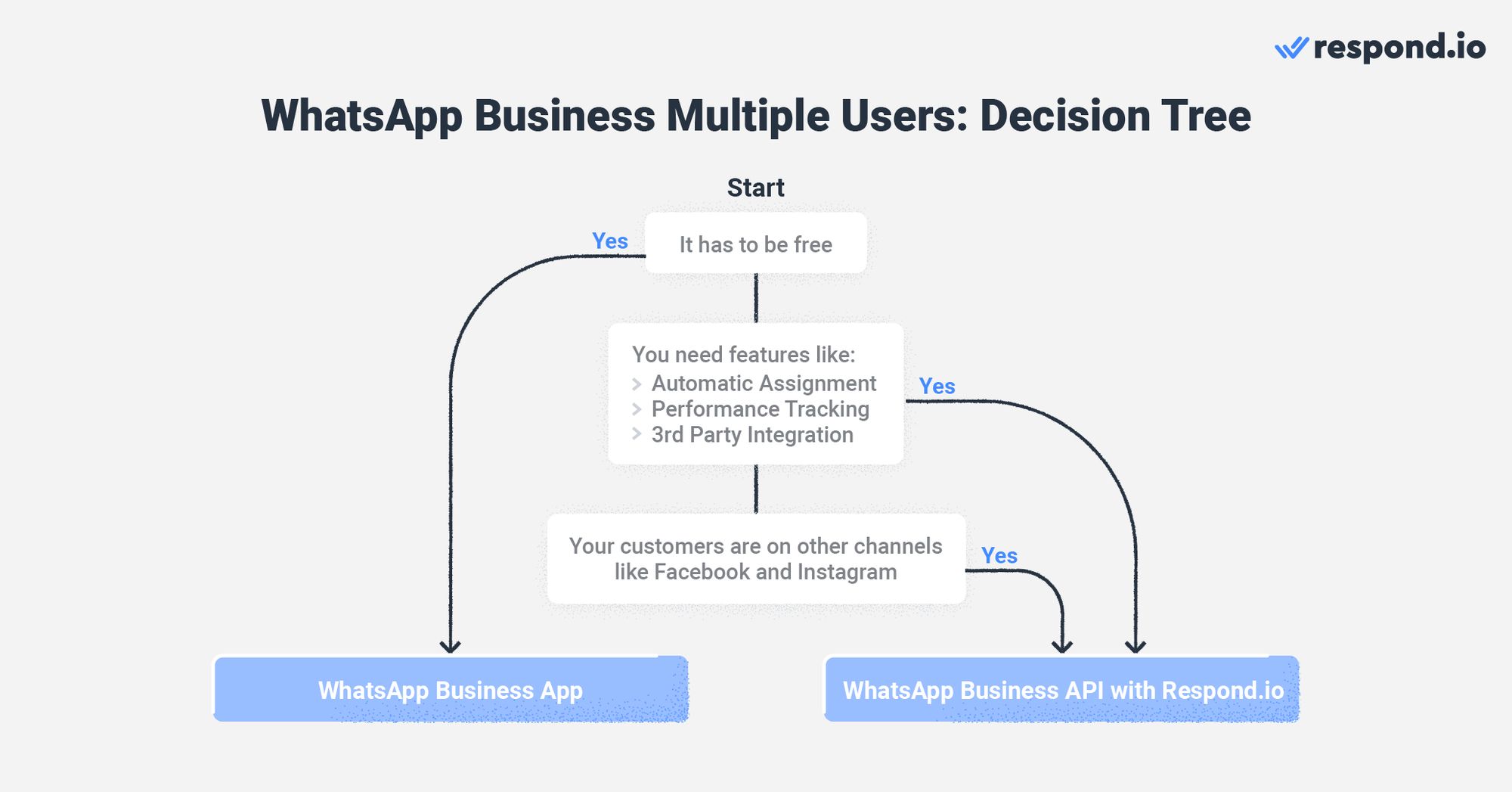
For medium to large businesses who want to use WhatsApp Business with multiple users, we recommend WhatsApp API. WhatsApp API allows you to connect to a business messaging platform like respond.io to set up customized Workflows, assign contacts to agents, and more.
2. WhatsApp Business App Limitations
WhatsApp Business App lacks advanced functions for marketing like the ability to set up drip campaigns and promotional push notifications. These actions can only be done with WhatsApp API connected to respond.io.
Another drawback to WhatsApp Business App is that for WhatsApp bulk messages you need to create broadcast lists, with a maximum of 256 contacts per list. On the other hand, with WhatsApp API, you can send bulk messages to an unlimited number of contacts depending on your tier level.
Even though WhatsApp API supports large-scale broadcasts, each WhatsApp Business Account (WABA) has daily messaging limits that start small for new accounts and increase over time based on messages sent and good sending practices.
For example, a newly verified account starts at 2,000 daily business-initiated messages, then increases to 10,000, 100,000, and eventually unlimited. All numbers under the same WhatsApp Business Portfolio share the limit, making it easier to unlock new limits.
3. Costs and Regulations
WhatsApp Business App is completely free. WhatsApp API incurs costs, including the respond.io account fee, Business Solutions Providers (BSPs) fees, and WhatsApp message template fees. That said, the potential benefits of WhatsApp promotional messages far outweigh the costs.
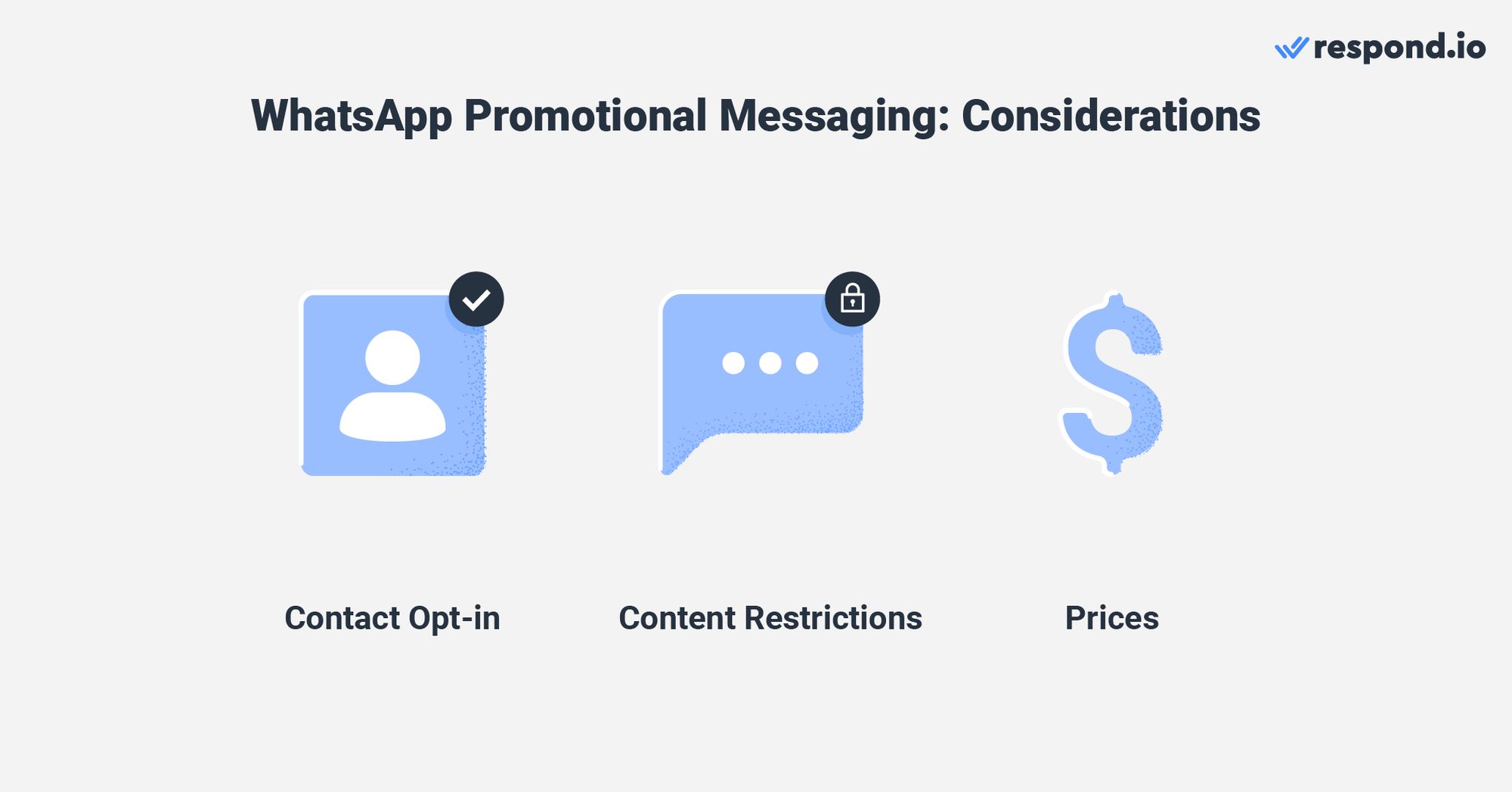
With both WhatsApp Business App and WhatsApp API, there are some regulations you need to follow. No one likes being spammed, and if you’re suspected of spamming, your account may be banned.
Firstly, Contacts have to opt in to receive promotional messages. Contacts can opt in by sending you a message, filling out a form, scanning your WhatsApp QR code or through a click-to-chat ad.
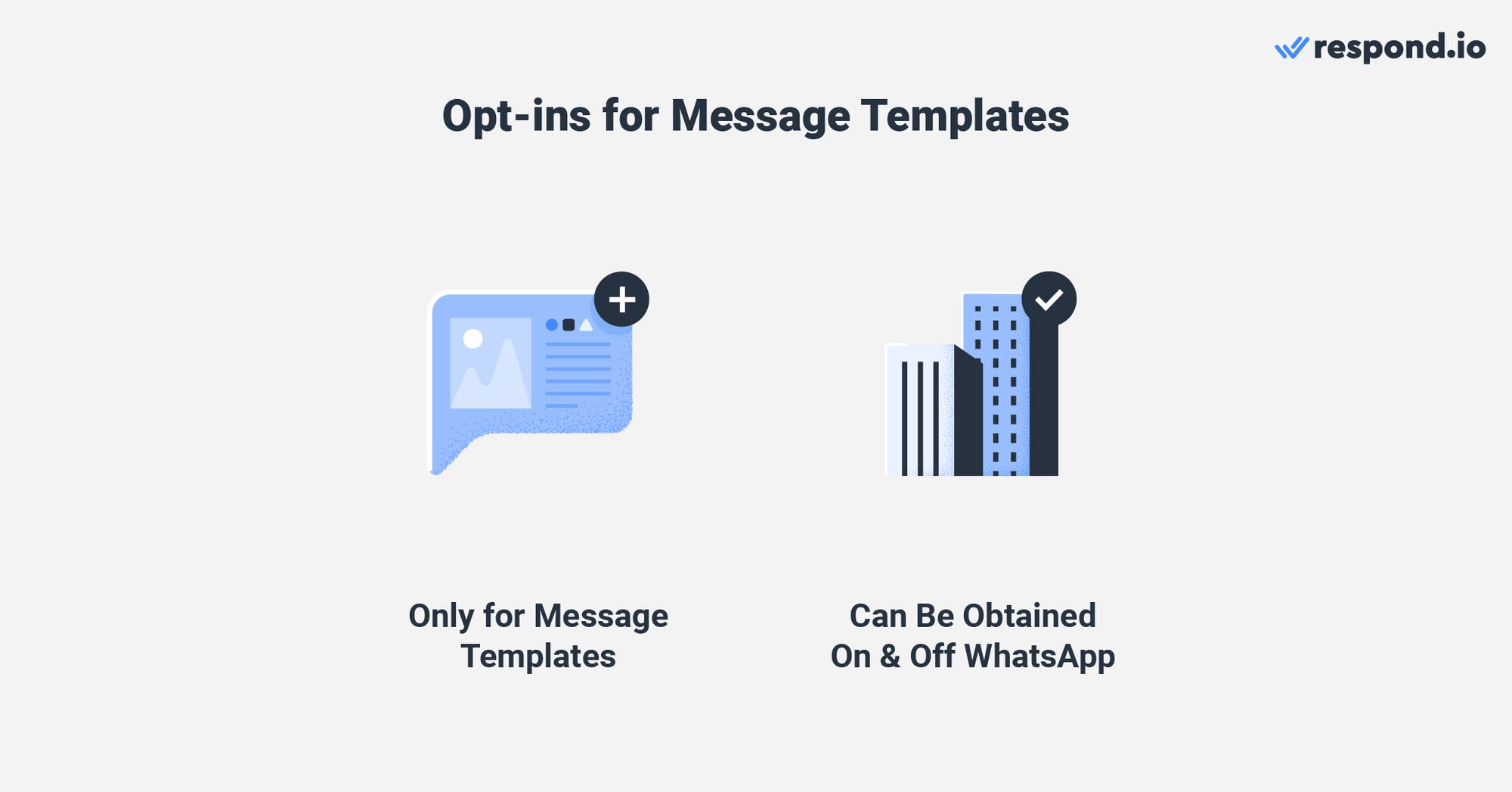
You also have to abide by the terms in WhatsApp’s Business and Commerce Policies. This includes only using pre-approved Message Templates for promotional content.
Meta has rolled out new WhatsApp Setup Guidance directly inside your Meta Business Portfolio. This new hub provides step-by-step instructions to simplify your API setup and manage message eligibility. You can now launch campaigns faster with pre-approved templates and instantly check your template review and appeals status.
How to Use WhatsApp for Marketing in 5 Steps
Once you have your WhatsApp Business App or WhatsApp API account ready, it’s easy to start fitting WhatsApp into your marketing strategy. Get creative and use respond.io to streamline the process.
The marketing process is best illustrated by a funnel. Your WhatsApp marketing strategy can be seen in the same way. We’ll show you step-by-step how to use WhatsApp to guide prospects down the funnel.

1. Generate Leads with a WhatsApp Link or QR Code
Since you need to get prospects to message you before sending promotions, find creative ways to do this. We’ll talk about a few examples later. Think about what appeals to your audience.
Generate a WhatsApp link or QR code with respond.io to create ads or social media promotions. Click-to-chat ads make it easy for prospects to respond. All they have to do is click the WhatsApp link and you’ll get their phone number; there’s no need to fill out a form. You can set up a WhatsApp auto reply so they get an instant response when they engage with the ad.
2. Build and Segment Your Audience
You can also work with your existing phone contact list. Import it into respond.io to use with your WhatsApp campaigns.
Add Tags to segment your audience. Tag them according to where they came from (e.g., WhatsApp ad, phone contacts) and what product or service they showed interest in.
3. Send Promotional Broadcasts
Once you’ve segmented your audience, you can start sending them relevant promotional messages. Tags come in handy here to ensure contacts get the type of messages they expect and won’t flag you as spam.

For example, you can send a message with an offer as soon as the contact opts in and then send monthly messages about the latest specials, along with occasional messages about products they’ve expressed interest in.
You can also use WhatsApp for remarketing to suggest related products or upgrades to your existing customers. Consider offering a loyalty discount to make the offer more enticing.
Starting April 1, 2025, WhatsApp will pause all marketing template messages to US phone numbers (+1). This aims to improve the user experience and business outcomes. Sending messages after this date will result in an error.
4. Guide Prospects through the Funnel with Drip Campaigns
Customize and automate your conversations further with WhatsApp drip campaigns. Most people won’t make a purchase the first time they hear about a product. They need to consider it over time and be reminded of its value.
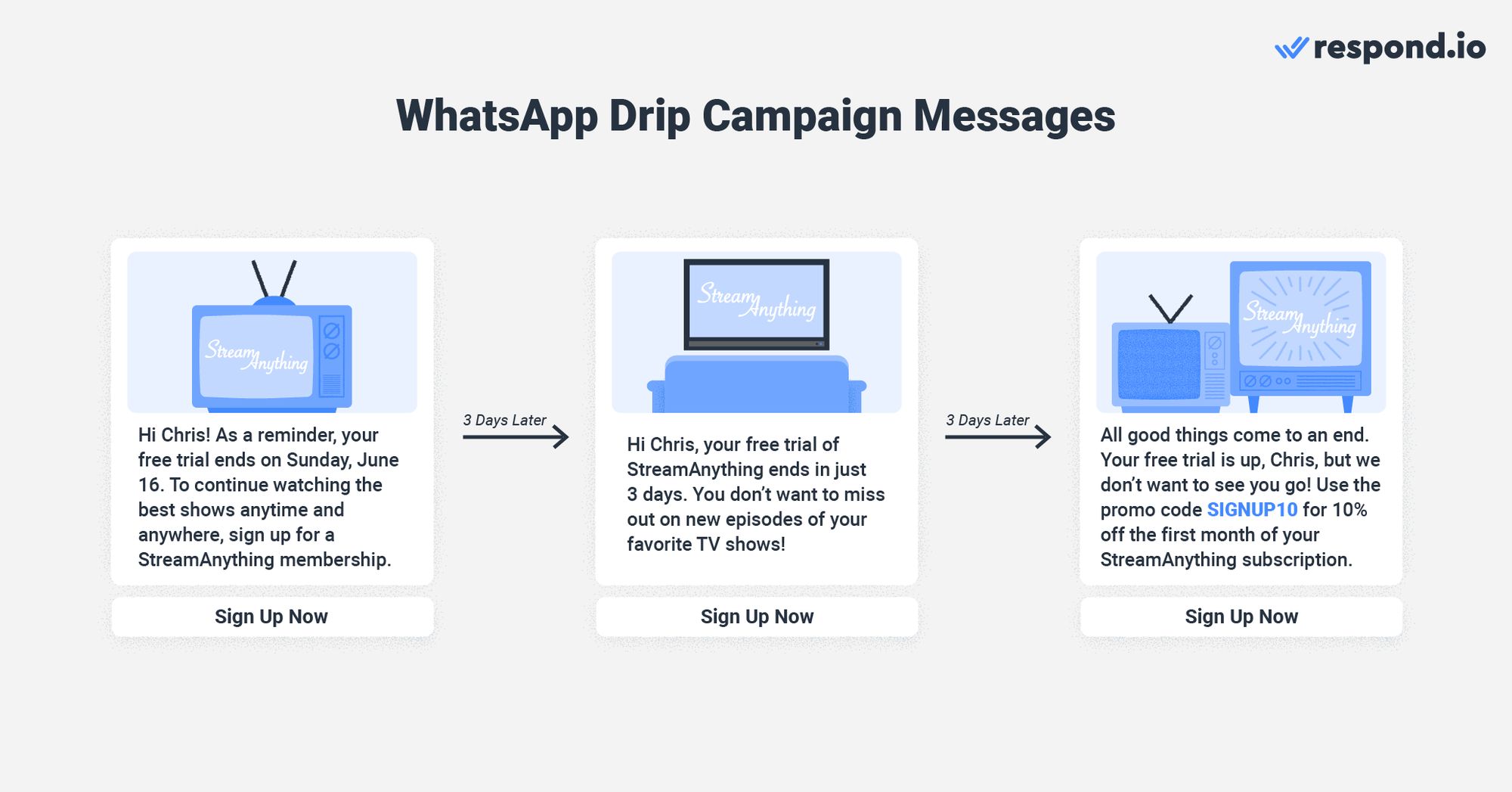
Set triggers to send automated messages, for example, if they have an abandoned cart or if their trial is about to expire. WhatsApp abandoned cart messages give you the opportunity to draw back as many as 60% of customers.
Setting up WhatsApp promotional messages in response to specified trigger events involves a similar process as WhatsApp push notifications. You’ll soon be able to do this via Messages API through a Zapier integration.
5. Conduct Customer Satisfaction Surveys and Encourage Referrals
Happy customers will do marketing for you by referring their friends. Use respond.io to create an automated customer satisfaction survey. Not only will you get valuable feedback from this, but you can also offer highly satisfied customers referral incentives.
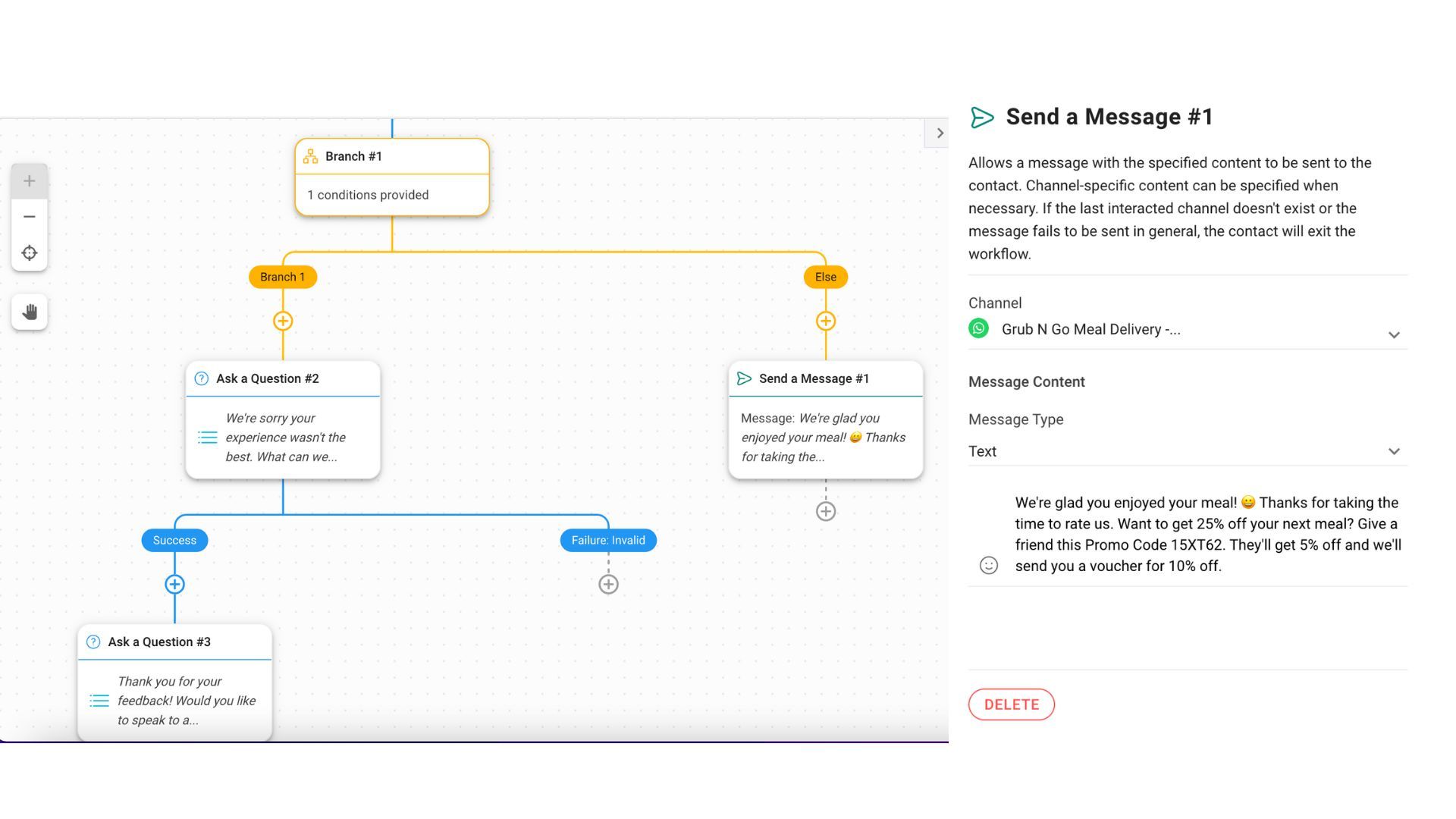
For example, create a Workflow where customers who gave 4-5 stars in a survey get a promo code to share. When the code is used, the customer gets a discount. Customers who gave 1-3 stars are given the option to chat with an agent about their issues.
3 Best Practices for WhatsApp Marketing
1. Aim for Engagement
The goal of WhatsApp marketing should be conversations that lead prospects to take action. Click to chat ads are a great way to get leads to provide information about their needs. When you send promotional broadcasts, it’s also important to encourage customers to reply rather than just informing them about a promotion.
For example, include a CTA button like “Get discount,” “Shop now” or “RSVP.” The number of responses you receive helps gauge the effectiveness of your marketing. Additionally, it lets Meta know that recipients find your messages valuable. If recipients are not engaging with your promotional messages, there is a chance that further Marketing template messages to these customers will not be delivered.
2. Limit Frequency of Promotional Broadcasts
Promotional broadcasts are useful for retargeting customers with the latest news or special deals. Meta now limits businesses to sending two marketing template per customer in a 24-hour period. If the customer responds, you can send an additional template message.
However, we recommend sending fewer than this for a better customer experience. Put yourself in the customer’s shoes. Nobody wants to receive a WhatsApp message from a business every day even if they’ve opted in to promotions. Schedule your messages wisely, for example, announce a promotion and then send another reminder when the promotion is about to end.
3. Use Eye-Catching Visuals
Whether in ads, social posts with chat links or promotional messages, visuals help capture attention. In ads or social media posts, pique curiosity with creative images or videos. In template messages, make sure your offer is immediately clear. For example, add a WhatsApp catalog image to showcase an item that’s discounted.
We share some examples of successful marketing campaigns in the next section to give you some inspiration.
3 WhatsApp Marketing Examples to Inspire You
Marketing on WhatsApp is a great way to increase your engagement and ultimately convert leads into sales. Many companies have proved this with successful WhatsApp campaigns. Let’s have a look at a few of them.
1. Maggi Germany Engages Customers with WhatsApp Cooking Classes
Globally popular German food brand and cooking school Maggi wanted to encourage customers to cook at home with Maggi products. To do this, it developed a virtual cooking course conducted entirely over WhatsApp.

Users message virtual assistant Kim who guides them step-by-step through simple recipes. Kim also provides users with a shopping list along with helpful tips and quizzes on nutrition and food safety.
How They Did It
Maggi announced the WhatsApp campaign on its website, in newsletters, and in press releases. It also promoted it through click-to-chat ads on Facebook and Instagram.
The Results:
In the first eight weeks after the launch, Kim had received over 200,000 messages. There was a major increase in brand awareness, and surveys conducted showed that ads for this WhatsApp campaign were more memorable, with a 4.2 increase in ad recall lift over other ads.
Customers appreciated the personal connection through an app they use daily. While they may not have considered cooking courses in the past, their interactions with Kim showed them how easy it was to make cooking a part of their routine.
2. Vyatta Boosts Sales with Click to Chat Ads
Indonesian brand Vyatta produces a range of tech accessories, including headphones, smartwatches, speakers and chargers. It regularly used Facebook ads to send buyers to its online store.
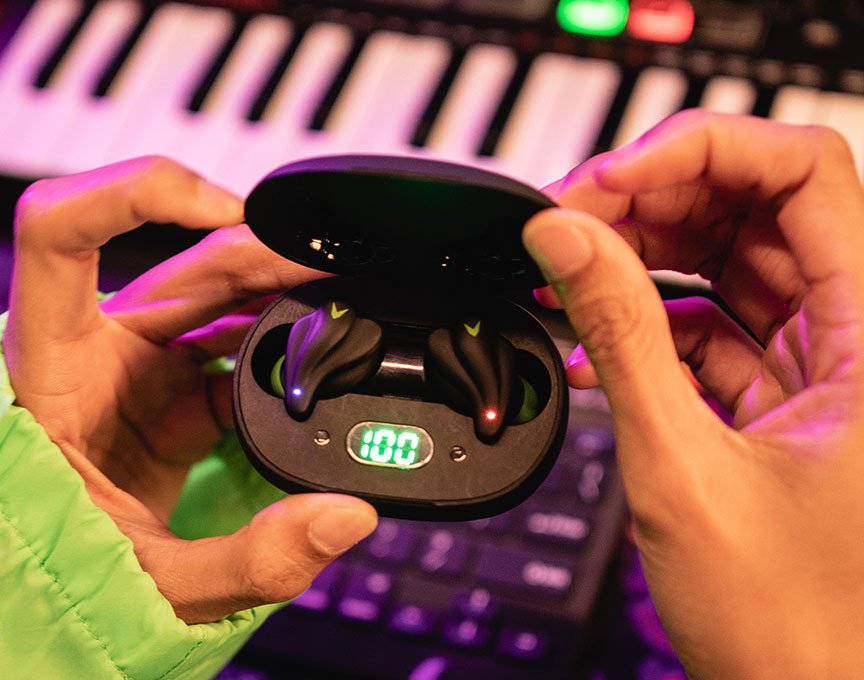
However, Vyatta wanted to see if chatting with a sales representative to get more information about the product would increase purchases, so it tried click-to-chat ads directing buyers to WhatsApp rather than to the store.
How They Did It
To see which method was more successful, directing buyers to WhatsApp or to the store, Vyatta ran a split test over six weeks. It used both types of ads and then compared the results.
The Results
The click-to-WhatsApp ads were a resounding success. Vyatta found that these ads resulted in 5X more purchases at 79% less cost per purchase.
Prospects who interacted with WhatsApp also viewed 2X more product pages and completed 2X more add-to-cart actions than those who interacted with the other ads.
3. Qobolak Doubles Lead Conversions with WhatsApp Broadcasts
Qobolak, an education placement company, links students in the Gulf Coast Countries with universities in the UK, USA, Europe and Australia. It successfully generates most of its leads at education fairs yet faced challenges in effectively communicating its participation at these events to potential students.
Sending WhatsApp broadcasts via respond.io served as a direct channel to deliver such announcements and updates to a wide audience efficiently.

How They Did It
Qobolak sent 49,800 WhatsApp broadcast messages over eight months, keeping prospects informed about education fairs and promotions to enhance its outreach and impact in the educational placement sector.
The Results
This new approach has led to significant improvements in event visibility and attendance. The use of WhatsApp broadcasts proved highly effective, resulting in a 95% increase in lead conversions. This approach keeps Qobolak at the forefront of students' minds, boosting engagement and rapidly improving lead generation and conversion rates.
Ready to Unleash the Full Potential of WhatsApp Marketing?
Have these examples sparked ideas to apply to your own business? To get the complete benefits, it’s best to sign up for a WhatsApp API account, as we’ve explained. Run click to chat ads, segment and target customers, send promotional messages and more to maximize your leads and keep them engaged.
Start implementing your own WhatsApp marketing strategy today. Sign up for a respond.io account so you can connect WhatsApp API and seamlessly manage all the leads that come in from your campaigns.
Turn conversations into customers with respond.io's official WhatsApp API ✨
Manage WhatsApp calls and chats in one place!
FAQ and Troubleshooting
What types of messages can I use for WhatsApp marketing?
When you send marketing messages via WhatsApp API, you’ll need to use pre-approved template messages in the Marketing category. Approved use cases for these messages include product news, promotional offers, retargeting and building customer relationships.
What are the limitations on sending WhatsApp promotional messages?
WhatsApp limits businesses to sending a maximum of two marketing template messages in a 24 hour conversation window without a customer responding. If a customer responds, an additional marketing template is permitted and free-form messages can be used to continue the conversation.
Can we do WhatsApp marketing without getting banned?
It’s important to only send WhatsApp messages to customers who have opted-in to receive messages from you. You should also avoid sending too many messages in a short period of time. If you send frequent promotional messages, recipients may block your business as spam even if they previously opted in.
Which is better, email marketing or WhatsApp marketing?
WhatsApp marketing is superior to email if your audience uses WhatsApp as their preferred instant messaging channel. Most promotional emails sit in inboxes unread or are relegated to the Spam folder. Because of this, email has an open rate of about 15%; 85% of people who receive your emails won’t even look at them. In contrast to email’s low open rate, 80% of WhatsApp messages are seen within 5 minutes.
Is WhatsApp marketing with WhatsApp API expensive?
It depends on your provider. Meta charges per conversation or per message (depending on the template type), but some WhatsApp Business Solution Providers (BSPs), like SleekFlow, may add extra charges per WhatsApp account or user. With respond.io, you only pay your respond.io subscription and Meta’s official WhatsApp marketing fees, with no hidden or per-number charges.
Further Reading
To learn more about using WhatsApp for marketing, check out these articles:


























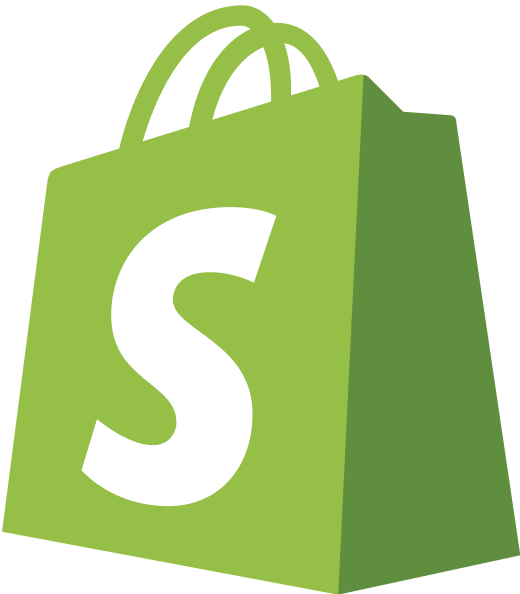

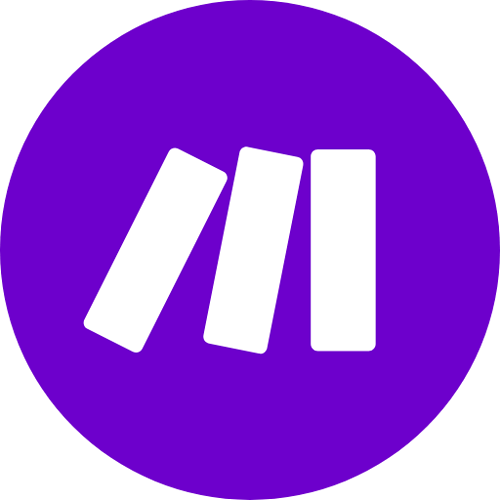









 Electronics
Electronics Fashion & Apparel
Fashion & Apparel Furniture
Furniture Jewelry and Watches
Jewelry and Watches
 Afterschool Activities
Afterschool Activities Sport & Fitness
Sport & Fitness
 Beauty Center
Beauty Center Dental Clinic
Dental Clinic Medical Clinic
Medical Clinic
 Home Cleaning & Maid Services
Home Cleaning & Maid Services Photography & Videography
Photography & Videography
 Car Dealership
Car Dealership
 Travel Agency & Tour Operator
Travel Agency & Tour Operator




